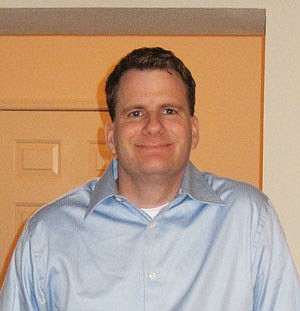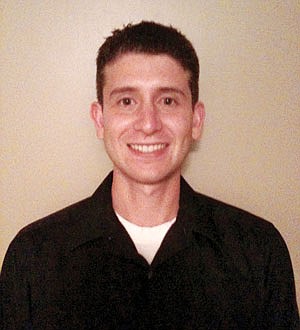 Facebook
Facebook
 X
X
 Instagram
Instagram
 TikTok
TikTok
 Youtube
Youtube

Abe Lincoln championed government for the people and said you can only fool some of the people all of the time. In San Diego, government gives succor to a handful of the most affluent people while the taxpaying suckers foot the bill — seemingly all of the time.
San Diego has inadequate police protection; undermanned and underequipped firefighting forces despite periodic catastrophic wildfires; a wastewater system out of compliance with federal rules; a hemorrhaging library system; a rotting infrastructure; a lack of downtown affordable housing despite developers’ solemn promises; a big pension shortfall; and a staggering structural fiscal deficit. Yet political and business leadership conspire to steer public money into downtown projects that should be financed with private capital. Real estate developers and their toadying lawyers and lobbyists get rich on taxpayer money while the quality of life for most of those taxpayers declines.
A new book outlines the historical, political, economic, sociological, and journalistic forces that brought about these twisted priorities. This book is Paradise Plundered: Fiscal Crisis and Governance Failures in San Diego, published by Stanford University Press. The publication date is September 10. It will go into stores and can be purchased online around that time.

The authors are political science professor Steve Erie, director of the urban studies and planning program at the University of California San Diego; Vladimir Kogan, a political science PhD candidate at the same university; and Scott MacKenzie, assistant professor of political science at the University of California Davis.
The hucksters have an alliterative name for San Diego’s corporate welfare: “public-private partnerships.” The authors show why the name should be “public-private pillaging.”
For example, Centre City Development Corporation (CCDC) is “a shadow government with little direct contact with the voters,” says Erie. The system is rigged so that redevelopment money goes into a downtown that is not blighted while neighborhoods get crumbs, even though they are blighted. In San Diego, “As long as the sun rises, people aren’t watching what happens. This gives leaders considerable leeway to craft these public-private partnerships that benefit the private partners without close public scrutiny or criticism.”

One way this is achieved is through “stacked deck committees,” Erie explains. A task force or committee will be appointed to study a particular issue, such as a massive subsidy to a sports team. But the committee members will have a personal stake in downtown interests. “You know what the report will be before it comes out.”
Invariably, the Union-Tribune will effervesce that the task force is made up of “distinguished citizens.” The book is critical of the U-T for not being a watchdog; for distorting the records of politicians who pose a threat to the establishment, such as Donna Frye; and for being a booster of the downtown crowd. Worse, most people get their news from television, which plucks items from the U-T. “On a scale of one to ten [ten being highest], our TV stations are a number one or two” in investigative and interpretive journalism, says Erie.
“What’s unique about San Diego is that the types of business interests that have a stake [in the corporate welfare schemes] provide benefits for only a few,” says Kogan. “The convention center benefits local hotels but not the rest of the people. The industries dominant in San Diego have very few spillovers for the rest of the economy. Other cities have corporate leaders with broader interests. Here the benefits are not for the community as a whole.”
Says Erie, “Look at how we have largely privatized the bayfront. Compare that with Chicago’s Millennium Park, which is open to the public.” San Francisco’s Presidio has been mainly turned over to the citizenry. “We have a privatized political culture. Other cities have the public as beneficiaries.”
In the early 20th Century, San Diego became wed to the military and has been feeding off it ever since. As a result, San Diego has become less self-reliant. “It was the boosters and the blue jackets, the Navy and the chamber of commerce. But Los Angeles won the infrastructure battle, developing railroads and the harbor and pushing full throttle on industrial development,” says Erie. “San Diego didn’t want dirty industry with minorities, Eastern European workers, collateral damage. The leaders thought of the military as clean industry. The Navy was the most Southern of the armed forces, bringing a plantation mentality with them.”
San Diego became accustomed to being bailed out by the military; after all, Navy-related spending can be contra-cyclical, rising while the economy is falling. But the Navy was not the only government teat being sucked. State and federal governments supply funds leading to tech and biotech industry innovations. Hotels, condo towers, shopping centers, sports stadia, and the like rely on fat government subsidies.
Yet business leadership professes to be conservative — lauding free enterprise, rugged individualism, freedom from government interference, all the while begging for subsidies. It’s part of the weird culture. San Diegans want first-rate services but won’t pay for them through taxes. The people distrust local government, but if they examined reality, they would distrust the businesses that are picking their pockets. Yet antitax populists “frame the discussion” so that all the woes are blamed on pension recipients, says Kogan, citing Councilmember Carl DeMaio and the editorial page of the Union-Tribune.

“In San Diego it’s a matter of framing,” says Kogan. “You either want an abandoned military base or you want Liberty Station.” That housing project is called “Corky’s Porkyville” in the book, after developer Corky McMillin, who grabbed every government subsidy he could get his sticky fingers on and built homes “on a park-like site that could have become another Balboa Park by the bay,” as columnist Neil Morgan put it. The project was typical San Diego: a private developer raked in public loot while the taxpayers got nothing but a huge traffic headache.
Meanwhile, Balboa Park was being underfunded while the City poured money into Petco Park, a massive gift to the Padres baseball team. The book shows why the deal was a loser for the public but a big winner for the then–majority team owner John Moores, who rode off to Texas with his gold.
But it wasn’t always this way. In 1868, Alonzo Horton set aside land for a public park. Retailer-philanthropist George Marston championed long-range planning in the early part of the 20th Century. Business leaders including Ulysses S. Grant Jr. planned the 1915 Panama-California Exposition that created the design and feel of Balboa Park on the acreage that Horton had set aside. Voters approved a large bond sale.
Now, with privatization the rage, Balboa Park is the subject of another either/or framing exercise: “ You want a private facility or nothing,” says Kogan.
From the outsourcing fad to the financing of Petco Park to the commercialization of biotech advances supported with government money, San Diego is characterized by these seldom-acknowledged words: “privatization of the gain and socialization of the risk.”
This book has numerous charts and graphs by which the reader can see how little San Diego spends on vital services such as police, fire, and streets and roads, compared with other California cities, and how comparatively little the citizens pay in taxes. San Diegans complain about potholes, but voter apathy guarantees that they will get deeper and more numerous while the money that would fix them goes into a few pockets.


Abe Lincoln championed government for the people and said you can only fool some of the people all of the time. In San Diego, government gives succor to a handful of the most affluent people while the taxpaying suckers foot the bill — seemingly all of the time.
San Diego has inadequate police protection; undermanned and underequipped firefighting forces despite periodic catastrophic wildfires; a wastewater system out of compliance with federal rules; a hemorrhaging library system; a rotting infrastructure; a lack of downtown affordable housing despite developers’ solemn promises; a big pension shortfall; and a staggering structural fiscal deficit. Yet political and business leadership conspire to steer public money into downtown projects that should be financed with private capital. Real estate developers and their toadying lawyers and lobbyists get rich on taxpayer money while the quality of life for most of those taxpayers declines.
A new book outlines the historical, political, economic, sociological, and journalistic forces that brought about these twisted priorities. This book is Paradise Plundered: Fiscal Crisis and Governance Failures in San Diego, published by Stanford University Press. The publication date is September 10. It will go into stores and can be purchased online around that time.

The authors are political science professor Steve Erie, director of the urban studies and planning program at the University of California San Diego; Vladimir Kogan, a political science PhD candidate at the same university; and Scott MacKenzie, assistant professor of political science at the University of California Davis.
The hucksters have an alliterative name for San Diego’s corporate welfare: “public-private partnerships.” The authors show why the name should be “public-private pillaging.”
For example, Centre City Development Corporation (CCDC) is “a shadow government with little direct contact with the voters,” says Erie. The system is rigged so that redevelopment money goes into a downtown that is not blighted while neighborhoods get crumbs, even though they are blighted. In San Diego, “As long as the sun rises, people aren’t watching what happens. This gives leaders considerable leeway to craft these public-private partnerships that benefit the private partners without close public scrutiny or criticism.”

One way this is achieved is through “stacked deck committees,” Erie explains. A task force or committee will be appointed to study a particular issue, such as a massive subsidy to a sports team. But the committee members will have a personal stake in downtown interests. “You know what the report will be before it comes out.”
Invariably, the Union-Tribune will effervesce that the task force is made up of “distinguished citizens.” The book is critical of the U-T for not being a watchdog; for distorting the records of politicians who pose a threat to the establishment, such as Donna Frye; and for being a booster of the downtown crowd. Worse, most people get their news from television, which plucks items from the U-T. “On a scale of one to ten [ten being highest], our TV stations are a number one or two” in investigative and interpretive journalism, says Erie.
“What’s unique about San Diego is that the types of business interests that have a stake [in the corporate welfare schemes] provide benefits for only a few,” says Kogan. “The convention center benefits local hotels but not the rest of the people. The industries dominant in San Diego have very few spillovers for the rest of the economy. Other cities have corporate leaders with broader interests. Here the benefits are not for the community as a whole.”
Says Erie, “Look at how we have largely privatized the bayfront. Compare that with Chicago’s Millennium Park, which is open to the public.” San Francisco’s Presidio has been mainly turned over to the citizenry. “We have a privatized political culture. Other cities have the public as beneficiaries.”
In the early 20th Century, San Diego became wed to the military and has been feeding off it ever since. As a result, San Diego has become less self-reliant. “It was the boosters and the blue jackets, the Navy and the chamber of commerce. But Los Angeles won the infrastructure battle, developing railroads and the harbor and pushing full throttle on industrial development,” says Erie. “San Diego didn’t want dirty industry with minorities, Eastern European workers, collateral damage. The leaders thought of the military as clean industry. The Navy was the most Southern of the armed forces, bringing a plantation mentality with them.”
San Diego became accustomed to being bailed out by the military; after all, Navy-related spending can be contra-cyclical, rising while the economy is falling. But the Navy was not the only government teat being sucked. State and federal governments supply funds leading to tech and biotech industry innovations. Hotels, condo towers, shopping centers, sports stadia, and the like rely on fat government subsidies.
Yet business leadership professes to be conservative — lauding free enterprise, rugged individualism, freedom from government interference, all the while begging for subsidies. It’s part of the weird culture. San Diegans want first-rate services but won’t pay for them through taxes. The people distrust local government, but if they examined reality, they would distrust the businesses that are picking their pockets. Yet antitax populists “frame the discussion” so that all the woes are blamed on pension recipients, says Kogan, citing Councilmember Carl DeMaio and the editorial page of the Union-Tribune.

“In San Diego it’s a matter of framing,” says Kogan. “You either want an abandoned military base or you want Liberty Station.” That housing project is called “Corky’s Porkyville” in the book, after developer Corky McMillin, who grabbed every government subsidy he could get his sticky fingers on and built homes “on a park-like site that could have become another Balboa Park by the bay,” as columnist Neil Morgan put it. The project was typical San Diego: a private developer raked in public loot while the taxpayers got nothing but a huge traffic headache.
Meanwhile, Balboa Park was being underfunded while the City poured money into Petco Park, a massive gift to the Padres baseball team. The book shows why the deal was a loser for the public but a big winner for the then–majority team owner John Moores, who rode off to Texas with his gold.
But it wasn’t always this way. In 1868, Alonzo Horton set aside land for a public park. Retailer-philanthropist George Marston championed long-range planning in the early part of the 20th Century. Business leaders including Ulysses S. Grant Jr. planned the 1915 Panama-California Exposition that created the design and feel of Balboa Park on the acreage that Horton had set aside. Voters approved a large bond sale.
Now, with privatization the rage, Balboa Park is the subject of another either/or framing exercise: “ You want a private facility or nothing,” says Kogan.
From the outsourcing fad to the financing of Petco Park to the commercialization of biotech advances supported with government money, San Diego is characterized by these seldom-acknowledged words: “privatization of the gain and socialization of the risk.”
This book has numerous charts and graphs by which the reader can see how little San Diego spends on vital services such as police, fire, and streets and roads, compared with other California cities, and how comparatively little the citizens pay in taxes. San Diegans complain about potholes, but voter apathy guarantees that they will get deeper and more numerous while the money that would fix them goes into a few pockets.
Comments